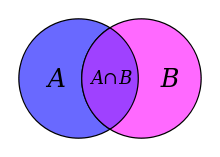Hereditarily finite set

In mathematics and set theory, hereditarily finite sets are defined as finite sets whose elements are all hereditarily finite sets.
Formal definition
A recursive definition of well-founded hereditarily finite sets goes as follows:
- Base case: The empty set is a hereditarily finite set.
- Recursion rule: If a1,...,ak are hereditarily finite, then so is {a1,...,ak}.
The set of all well-founded hereditarily finite sets is denoted Vω. If we denote P(S) for the power set of S, Vω can also be constructed by first taking the empty set written V0, then V1 = P(V0), V2 = P(V1),..., Vk = P(Vk−1),... Then
Discussion
The hereditarily finite sets are a subclass of the Von Neumann universe. They are a model of the axioms consisting of the axioms of set theory with the axiom of infinity replaced by its negation, thus proving that the axiom of infinity is not a consequence of the other axioms of set theory.
Notice that there are countably many hereditarily finite sets, since Vn is finite for any finite n (its cardinality is n−12, see tetration), and the union of countably many finite sets is countable.
Equivalently, a set is hereditarily finite if and only if its transitive closure is finite. Vω is also symbolized by , meaning hereditarily of cardinality less than .
Ackermann's bijection
Ackermann (1937) gave the following natural bijection f from the natural numbers to the hereditarily finite sets, known as the Ackermann coding. It is defined recursively by
- if a, b, ... are distinct.
We have f(m)∈f(n) if and only if the mth binary digit of n (counting from the right starting at 0) is 1.
Rado graph
The graph whose vertices are the hereditarily finite sets, with an edge joining two vertices whenever one is contained in the other, is the Rado graph or random graph.
See also
References
- Ackermann, Wilhelm (1937), "Die Widerspruchsfreiheit der allgemeinen Mengenlehre", Mathematische Annalen, 114 (1): 305–315, doi:10.1007/BF01594179
